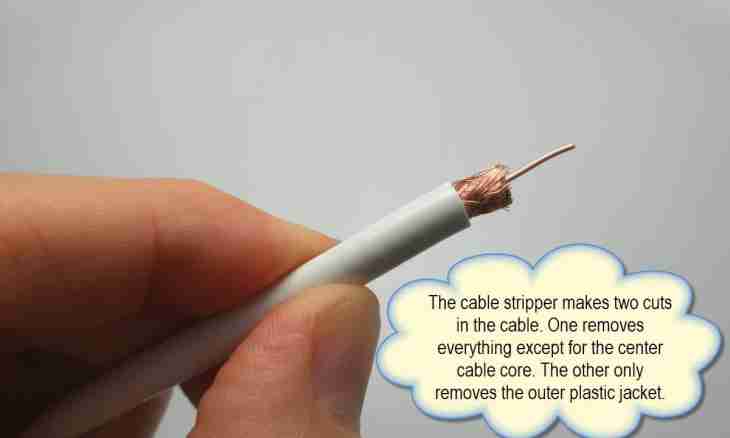Coaxial cables, as well as usual, it is necessary to splice, increase, equip with sockets. Need for implementation of these operations arises at breaks of cables, moving of the devices connected to them to other place, connection of new devices.
Instruction
1. If the cable needs to be increased, get its additional piece of necessary length. Its wave resistance has to be the same, as at the available cord. If this parameter of the available cable is unknown, it is necessary to be guided by the rule: television antennas connect a cord with a wave resistance of 75 Ohms, antennas of radio stations of range CB - a cable with a wave resistance of 50 Ohms. Cables for computer networks of the outdated standard have the same wave resistance (today such networks practically went out of use). Thickness of a cable is chosen depending on its appointment. It is necessary to apply a thick cord in two cases: its big length (for attenuation reduction) and the considerable power of the transmitted signal. If at least one of these conditions is observed, the cable has to be large diameter.
2. Before implementation of any operations with cables surely disconnect all equipment connected to them from network. In many devices there are condensers connecting the general wire to one of network wires. In this case, if to grab at the same time braids or the central veins of two cables or two ends of one cut cable, it is possible to receive painful blow by current. Even having switched-off all equipment, before simultaneous touch to two to current carrying parts of cables in any combination surely make sure of lack of tension between them by means of the voltmeter of alternating current. If the cable conducts to the sending device (for example, radio stations of the CB standard), it is necessary to make sure in addition of absence on it high-frequency tension by means of a wavemeter. Even at the small power the impact of such tension on skin is capable to cause burns.
3. It is possible to splice cables by twist or soldering only if the equipment connected to them - not telling as at such connection the coefficient of a standing wave considerably worsens that threatens the transferring equipment with failure. In the beginning smooth out both cables. Make a longitudinal cut on external isolation, untwine a braid, then, having taken her aside, twist. Then nippers remove isolation from the central vein. Connect a braid of one cord to a braid of another, make the same also with the central veins. Do not allow short circuit between a braid and the central vein at all. If soldering is applied, carry out it quickly not to melt isolation of the central vein that also threatens with short circuit. Carefully isolate all connections.
4. Much to a lesser extent the coefficient of a standing wave at connection of coaxial cables by means of sockets changes. They are two types: F (television) and BNC. Only the second are suitable for the transferring equipment. They, in turn, have to have the same wave resistance, as well as a cable and therefore are issued in two options: CP50 and CP75. For connection of a cable by means of sockets get a fork and the socket of the identical standard. It is better if they are calculated on accession without soldering use that there was no risk of short circuit from fusion of isolation of the central vein. Having attached to one end of a cord a fork, and to another - the socket, connect them with each other. If sockets have bared contacts (usually in such execution sockets are issued), isolate them.
5. In case the equipment used together with a cable is transferring, surely check by means of the measuring instrument of coefficient of a standing wave whether there was no this parameter beyond allowable limits. After that start use of the equipment.

